Jodorowsky: the last surrealist captivates youth at Monte Verità
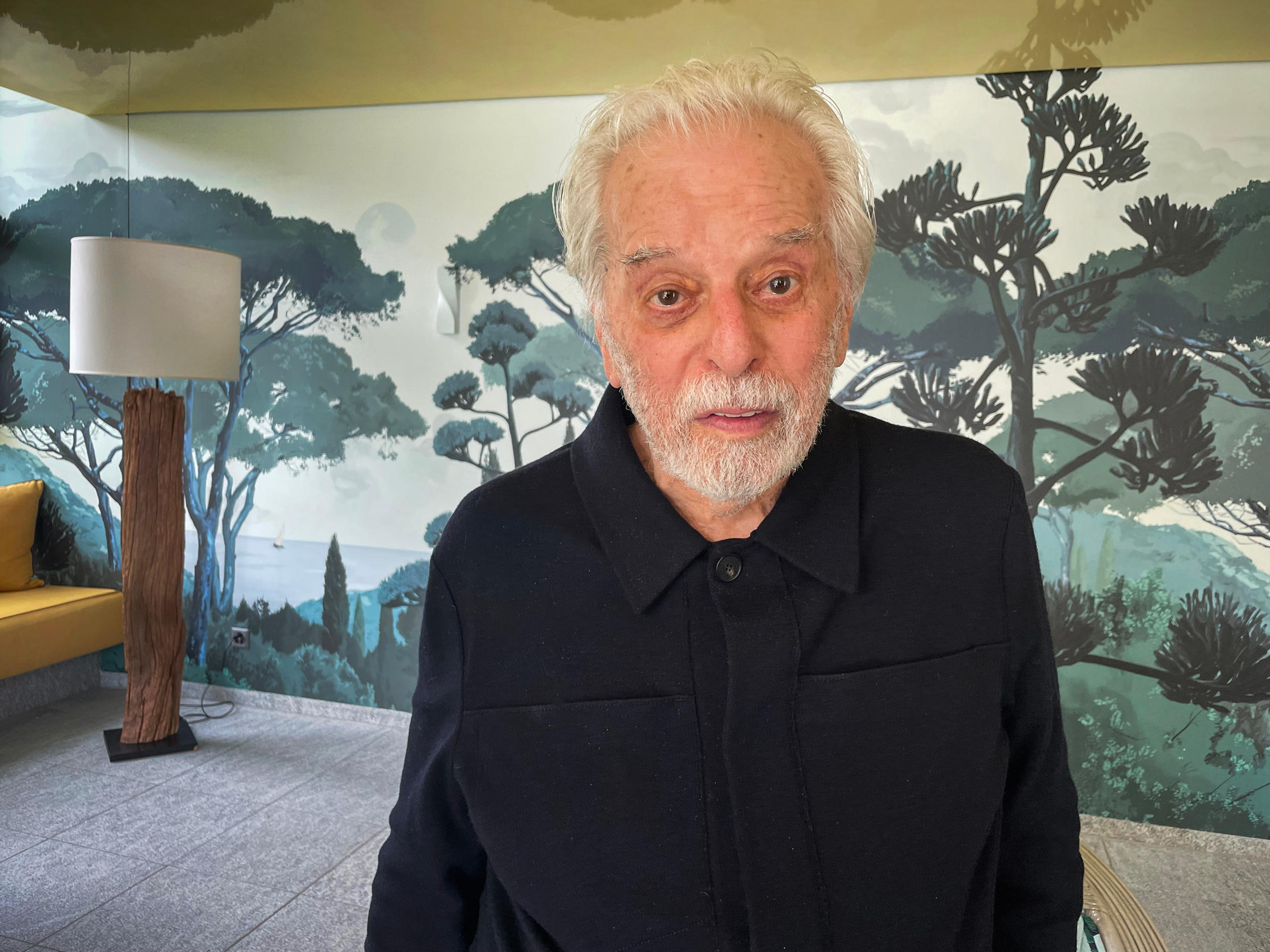
The writer, filmmaker and Tarot master was the guest of honour at the 11th edition of the literary festival held every year in the Monte Verità, where a pioneer alternative community was created 120 years ago. However, “there is no space for surrealism in Switzerland”, he told SWI.
Monte Verità sounded like a perfect jodorowskyan setting to meet Alejandro Jodorowsky. It was the site of the first alternative community congregating artists, writers and thinkers around a naturist, vegetarian, pacifist credo from all over Europe in the turn of the 19th/20th centuries. That artistic aura survives in its plush gardens, bungalows, and the main building. The latter, an original Bauhaus construction dated 1929 and recently renovated, hosts a luxury hotel and restaurant.
Monte Verità, however, has nothing to do with the Switzerland the Chilean-French artist experienced: “It’s a beautiful country, but I can say, at the risk of being wrong, that the Swiss have a problem with reality. I am not criticizing, it’s just that every place has its mores. Switzerland is not the place to live ‘el amor loco’ (crazy/mad love), artistic madness, or dreams. In sum, there is no ambience for surrealism here”, he said.
“The problem of the Swiss”, he goes on, “is that they carry the weight of the economic reality. To establish anything at all, they need a certain dose of perfect security. But life is not about perfect security. Life is made of the risks we take.”
By inviting Jodorowsky, the organizers of the Eventi Letterari Monte Verità (Literary Events) made rather a sure bet. The artist drew an audience of several hundred people, far more than expected, in the last day of the festival, that closed on April 2nd. More notably, the oldest guest of the festival drew in the youngest crowd, in sharp contrast to the mostly grey-haired audience of the previous talks.
A fandom crossing generations
The Jodorowsky fandom has many facets, as the artist himself. His critically acclaimed ‘outrageous’ movies made in the 1970s, such as the psychedelic-esoteric-barbaric Western El Topo (1970) and The Holy Mountain (1973), became cult films for arthouse viewers and counterculture adepts.
His failed attempt to film the sci-fi classic Dune became a popular documentary, and the futuristic designs signed by Moebius (Jean Giraud, 1938-2012) and H.R. Giger (1940-2014) became templates for many other sci-fi classics that came out soon afterwards (Star Wars, Alien), and of course, an obligatory reference for the film versions that made it to the big screen (by David Lynch, 1984; and by Denis Villeneuve, 2021).
As a writer of comics, he penned together with Moebius one of the most influential graphic novels of all times, “The Incal” series published in the 1980s – among many other collaborations with distinguished comics artists, such as the Italian Milo Manara.
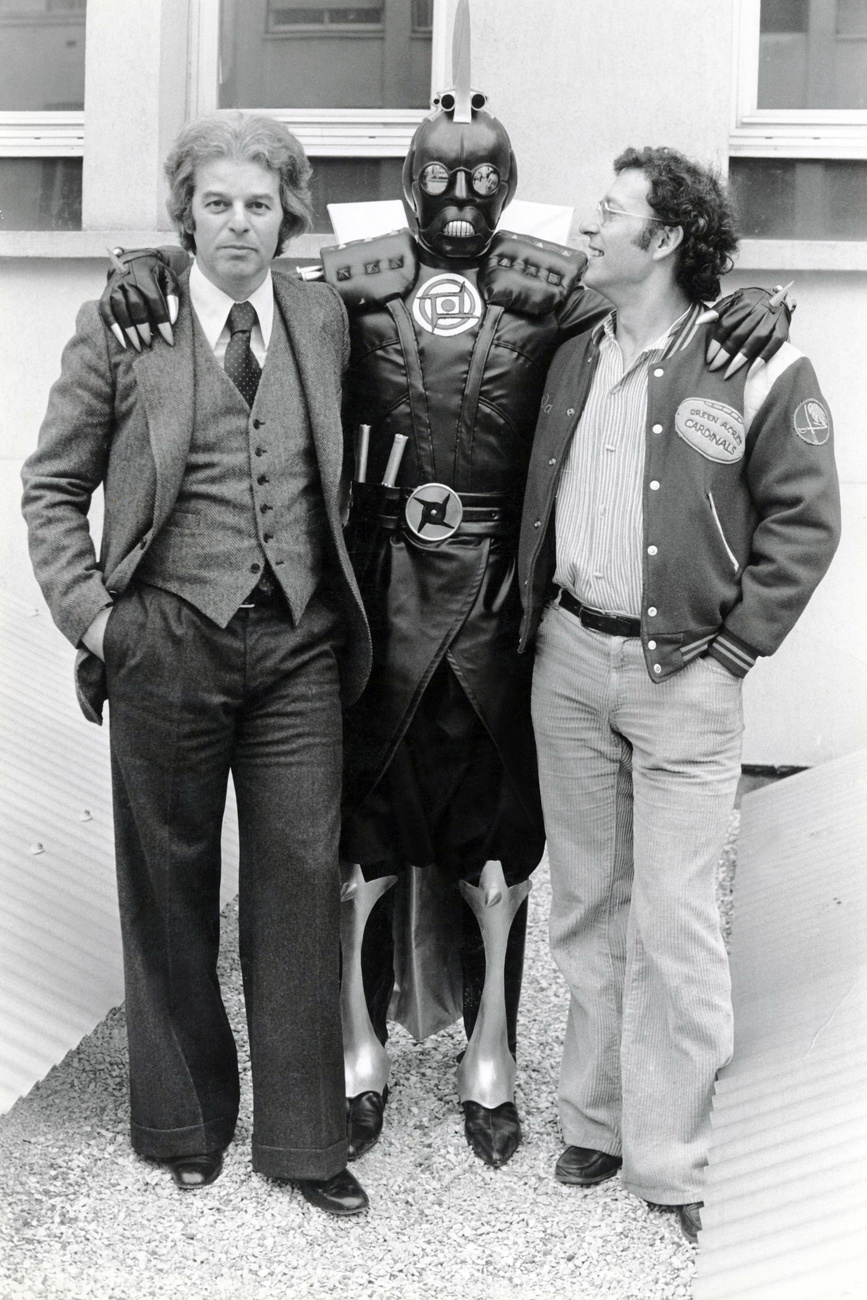
Then we have the creator of ‘psychomagic’, a therapeutic practice Jodorowsky describes as “healing path using the power of dreams, theater, poetry, and shamanism”. A very dear element of surrealism and its offsprings, the unconscious plays a vital part in every one of Jodorowsky’s activities, words, and works.
But what brought most of his public to the Holy Mountain of the arts this year was his work on the restoration of the supposedly primeval Tarot card deck, the Tarot de Marseille, together with the best-selling introduction to the card oracle (“The Way of Tarot”, co-written with Marianne Costa and first published in 2004).
His Instagram account has 317,000 followers – not bad for a 94-year-old influencer. In the queue for autographs right after his talk at Monte Verità, the Tarot crowd and psychomagic adepts pitilessly outnumbered film buffs and comix fans.
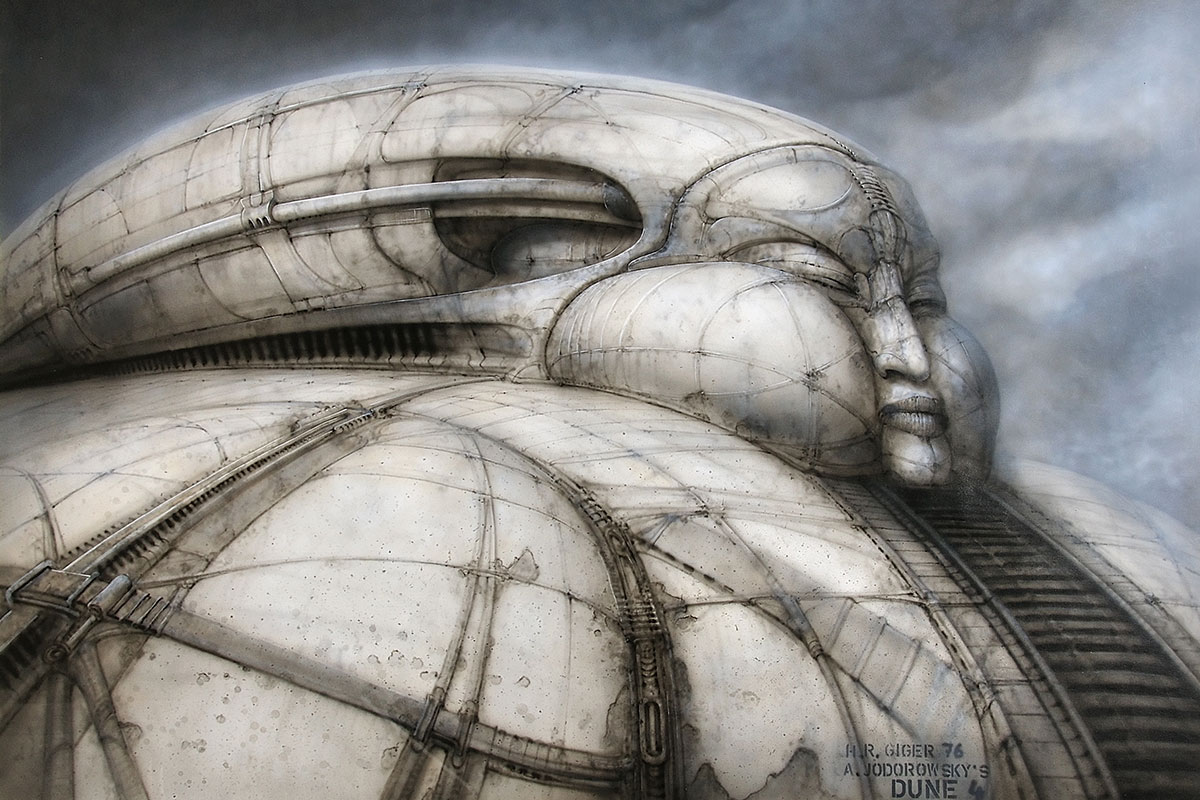
More
HR Giger and the buried ‘Dune’ project
Traffic lights, reality, and the Swiss
“I started to teach the Tarot in Switzerland”, Jodorowsky told SWI before his public talk. “Someone asked me to present it to a group, and I haven’t stopped since then”.
Jodorowsky apologised for his impaired hearing when asked repeatedly for more details – when, where did this public tarot presentations take place? He just skipped the questions and let his thoughts follow further in a mix of French and Spanish, as he reveled in sharing his impressions of Switzerland.
“The first time I came to Switzerland, I came from Naples, where nobody respects the traffic lights, while in Switzerland drivers stop at the red light even if there is absolutely no vehicle coming the other way. That means, for me, that the Swiss do not accept the reality, for reality is too dangerous for the Swiss, so he [sic] prefers to follow the rule of the law.”
His impressions touch the usual clichés regarding Switzerland. The precursors of Surrealism may have started to kick the establishment doors and to épater les bourgeois (to shock or dazzle the bourgeoisie, as the early Modernists liked to say) in Zurich, namely the Dadaists who took the Cabaret Voltaire by storm in 1916.
But, as Jodorowsky recalls, practically all the artists and poets gathered there were foreigners (Germans, French, Austrians, Romanians etc.,) seeking refuge in neutral Switzerland during the First World War.
The unconscious, collectively
At least one notable Swiss is very dear to the surrealists and to Jodorowsky: Carl Gustav Jung, one of the founding fathers of modern psychology.
“I used to love Jung, as I did Freud”, says Jodorowsky. “Both made a crucial step into the unconscious, the ‘depraved’. For Freud, the unconscious is in your mind; for Jung the unconscious is collective. Jung opened the gates of spirituality in psychology and throughout his career he advanced step after important step, but he fell short of making the ultimate step.”
Which is…?
“He found the basis of synchronicity, a repetition that takes place without we knowing why. However, he couldn’t develop further his idea of synchronicity because he considered himself a scientist. That’s why when you’re an artist you cannot be guided by Jung.”
Tarot and synchronicity
This misdirected scientificism, according to Jodorowsky, also affects Jung’s study of the Tarot. “The Tarot is not science. The Tarot is everything that Jung didn’t dare to dare. When he got in contact with the Tarot, he balked. As if he stood in front of a red light.”
“There is only one Tarot, the Tarot de Marseille”, he stresses. “The others are just imitations, they don’t possess the symbolic, mystical, magical content of the original tarot, which is anonymous.”
Jodorowsky refers to the myriad of tarot decks created by different artists and mystics with their own designs, such as the popular ones by Aleister Crowley and the Rider Tarot (by Arthur E. Waite and Pamela C. Smith). “Mystical things must be anonymous; as soon as it takes the name of somebody it becomes something else”, says Jodorowsky.
However, it was by a coup of synchronicity that Jodorowsky embarked in the quest for the original design of the Tarot de Marseille. One day, out of the blue, a disheveled young man knocked on his door while Jodorowsky was studying the Tarot. “He said: I came to see you because I cannot speak to anyone else, only to you. He told that after his father’s death he locked himself at home just watching TV. He said I appeared in front of him three times and talked to him, and he had to talk to me because he was the son of the family that has published the original Tarot in Marseille throughout the centuries.”
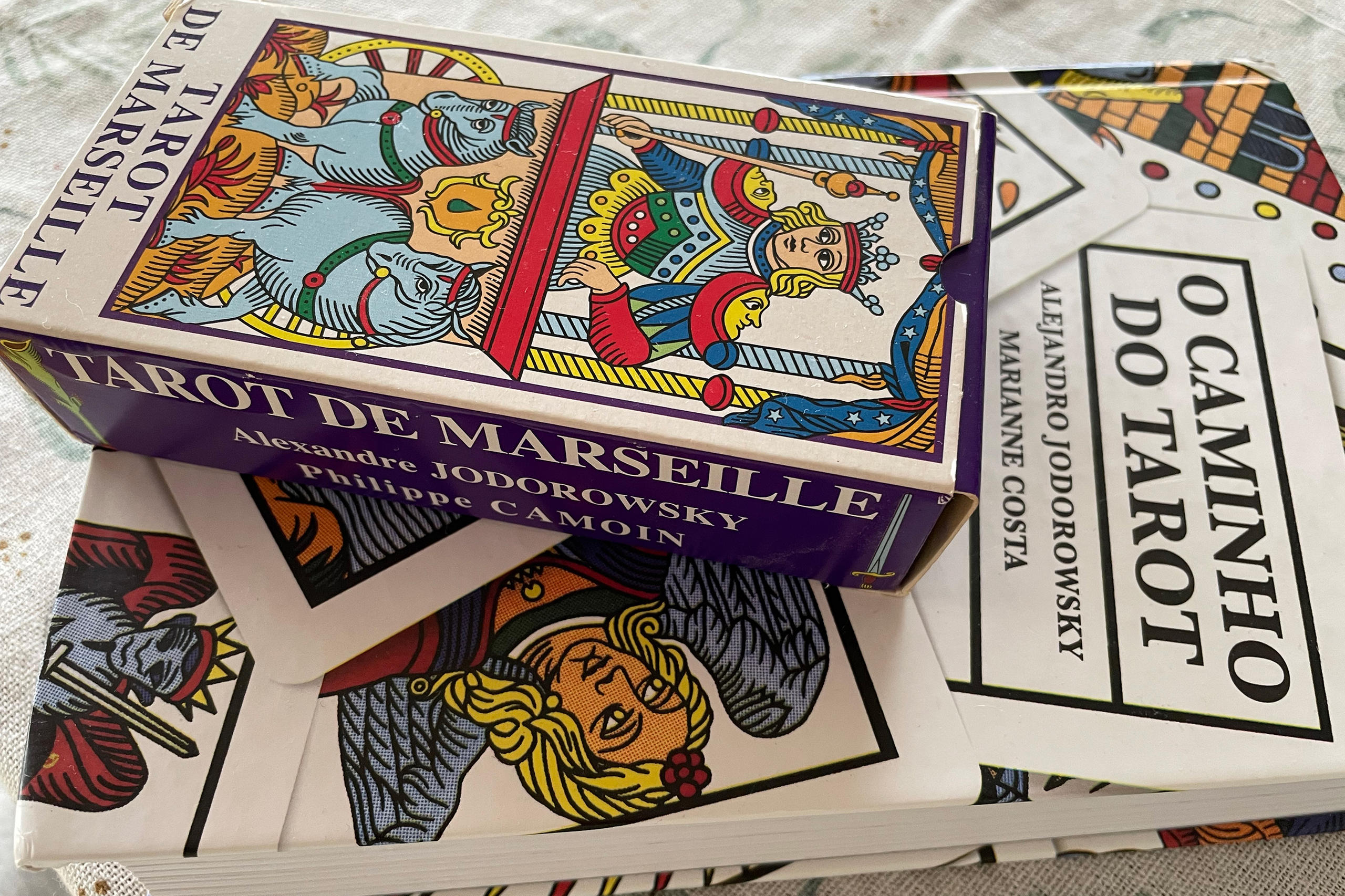
From this point, the conversation with Jodorowsky drifted into his joy in playing with the symbolic anagram of his name – ojo de oro, or golden eye, which is the spirit, the unconscious – and his interpretation of the alchemist’s quest, to turn lead into gold.
“Your conscious self is the lead, you must work it over so that it loses its delusions and illusions, expand itself, until the gold comes up. You are a golden eye surrounded by sensualities, and if you expand your sensuality well, you’ll find your ojo de oro“, he says.
In public, Jodorowsky didn’t talk about the past or about art. He kept on sharing his “lessons in life”, stressing how he still likes to take risks, and extolling his followers to do the same. But each one must find his or her or their own way, according to the principles of psychomagic. Even if the choice is to take no risks at all, like the proverbial Swiss.
“I can’t judge the Swiss for their ways; after all, it may happen that if they cross the red light, they still can crash into a speeding car”, he says.
In-between literary talks: Chuchchepati Orchestra plays Bumblebee Flight II Concert, an Installation for 8-32 speakers, insects and orchestra.
EVENTI LETTERARI MONTE VERITÀ
The motto of this year’s literary event, “Of Trees and War”, intended to tackle the two most challenging issues of the day, and to draw a reference to the historical context that led to the creation of the Monte Verità artists’ community in 1900.
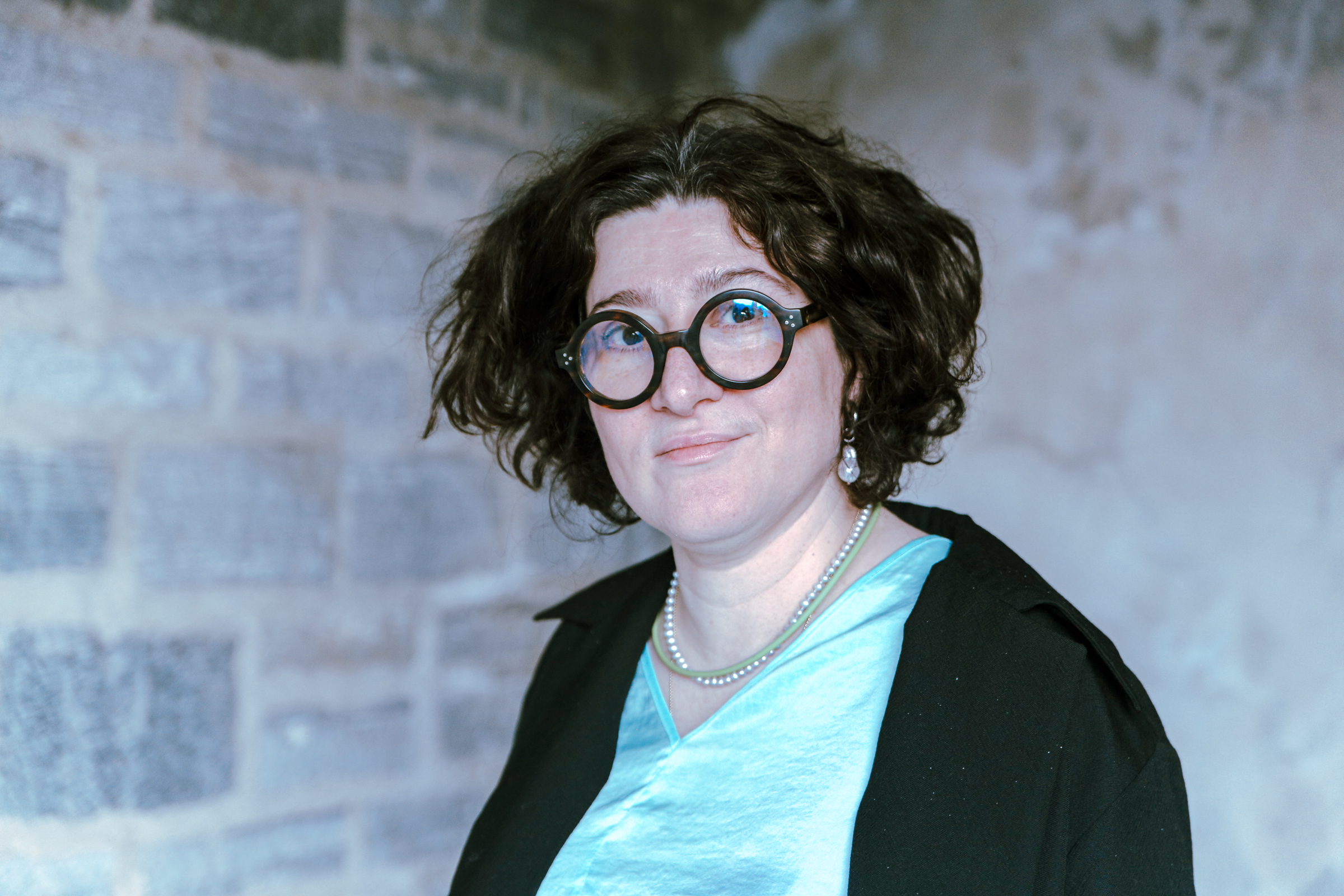
Climate crisis and war loomed over most of the talks and debates, as well as history. Reworking the past is ever more an urgency for the younger writers, such as the French-Algerian Kaouther Adimi and the Russian poet, exiled in Berlin, Marija Stepanova. However, the oldest guest, Jodorowsky, hardly mentioned the past or his past achievements and insisted on keeping up with the present with his “lessons in life”.
For the relatively small scale of the festival, the number of literary sensations present in Ascona was quite remarkable. The Australian anthropologist (and trained doctor) Michael Taussig, like Jodorowsky, hardly looks like his 83 years old. An established reference in his field, Taussig discussed his literary style that owes less to academic rules than to the beatnik writers of the 1950s and 1960s.
Meanwhile, younger literary luminaries such as Giuliano da Empoli and the Bernese writer Kim de l’Horizon, both widely awarded in Switzerland and Europe, took the festival beyond the dryness of the current politics of war and ‘Kremlinology’ (da Empoli), while de l’Horizon disputed assumptions of gender not only by his/her androgynous flair as for the critical stance towards the racist leanings of the Estonian artist Elisàr von Kupffer (1872-1932), whose 26-metre circular painting of a pioneering gay idyllic fantasy is displayed in a pavilion at the Monte Verità.
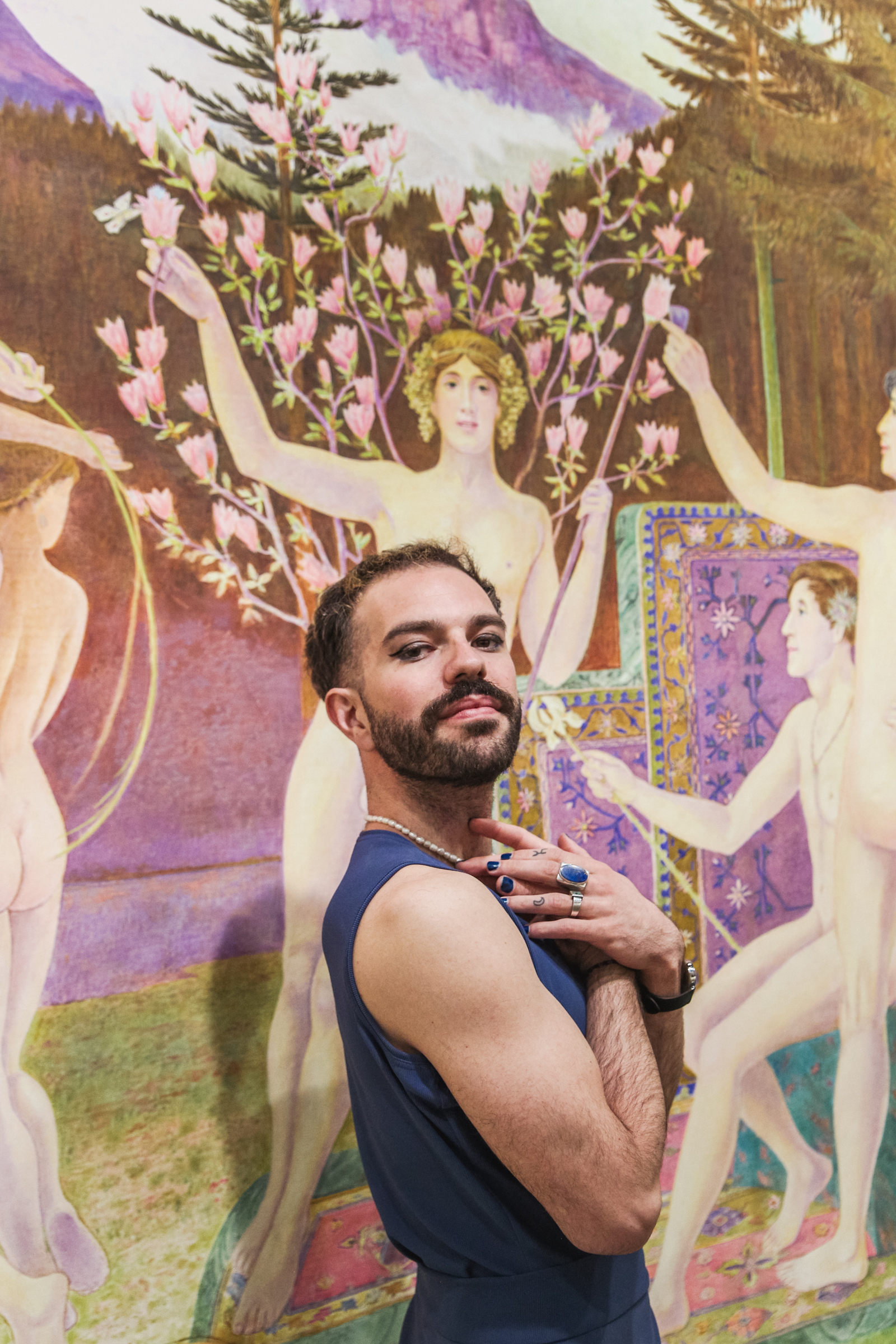
Conceived by the Zurich literature critic Stefan Zweifel and presided by the duo of operational and institutional heads of the Locarno Film Festival (Raphaël Brunschwig and Marco Solari), the 11th edition of the Eventi Letterari succeeded in putting the canton of Ticino in the literary calendar of Switzerland with a sharp international edge.

In compliance with the JTI standards
More: SWI swissinfo.ch certified by the Journalism Trust Initiative
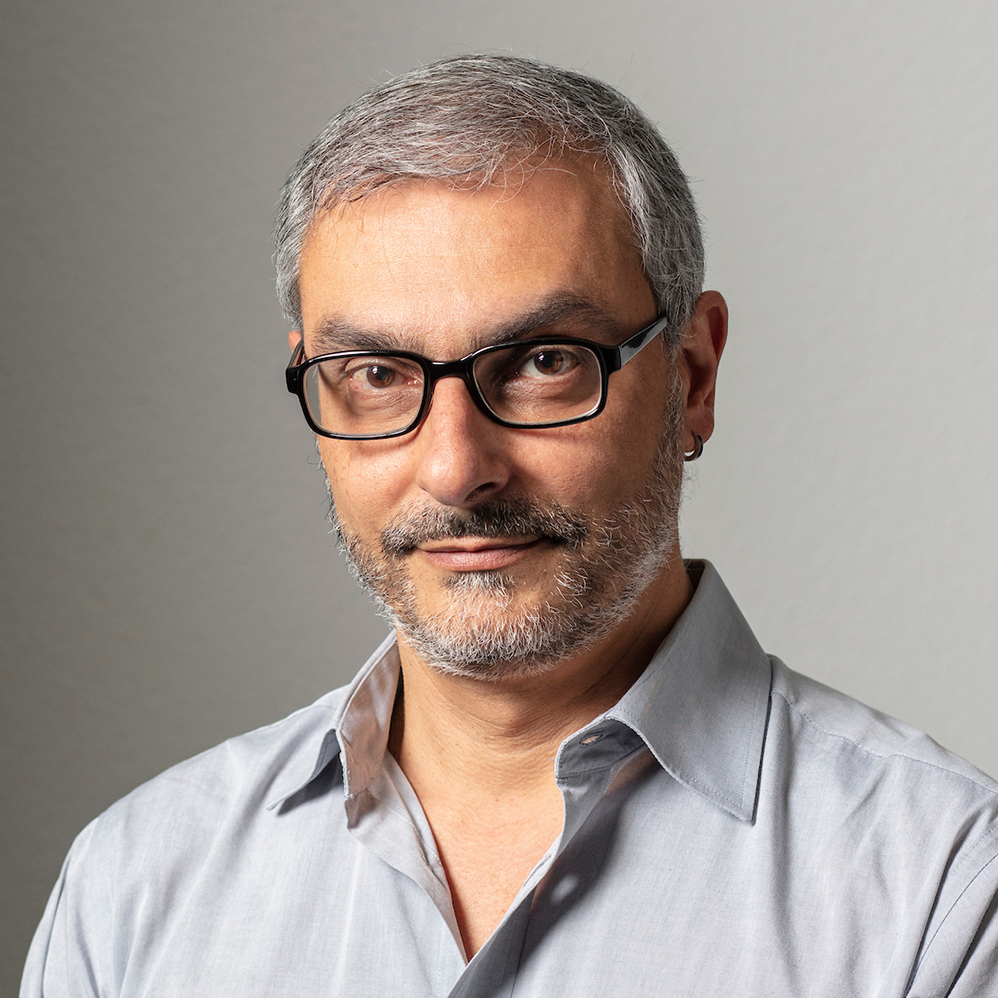

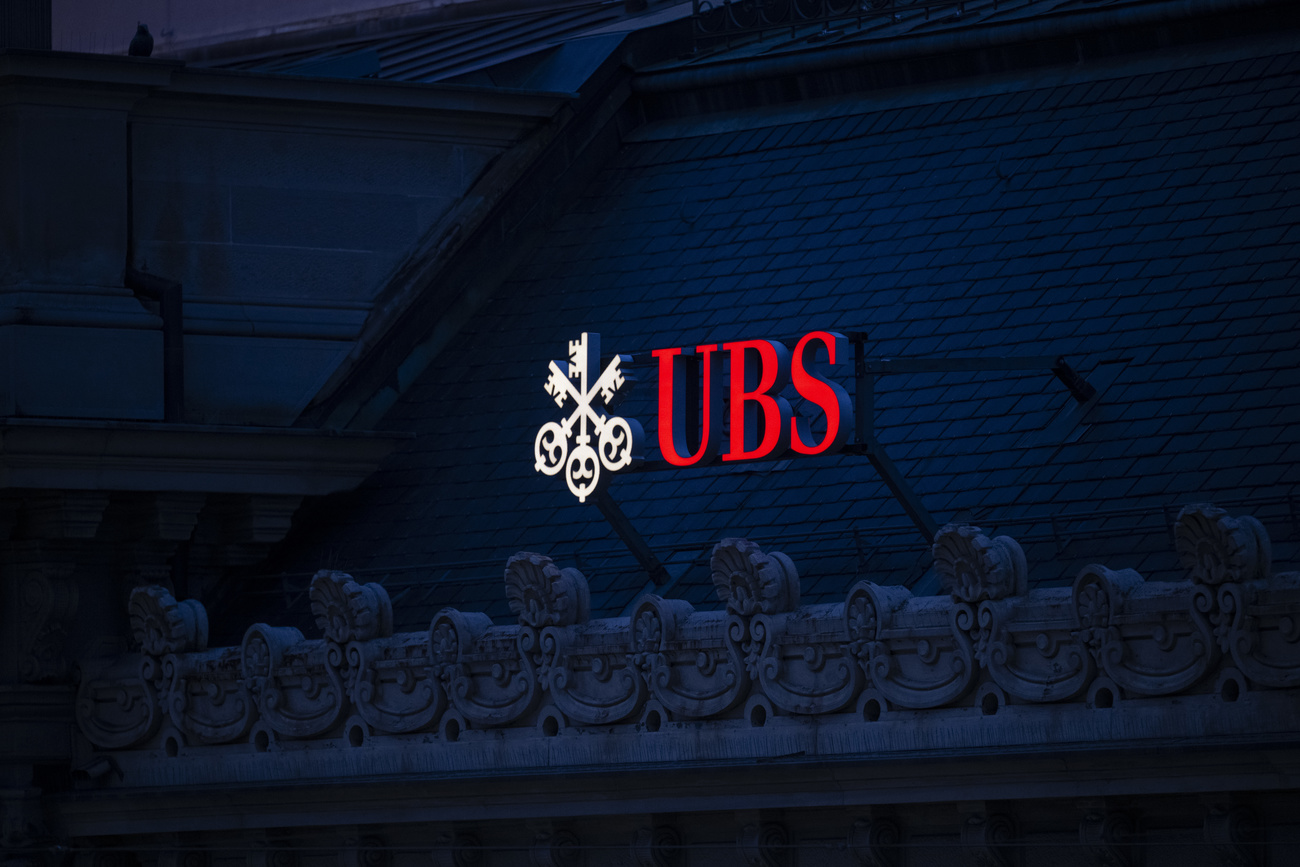



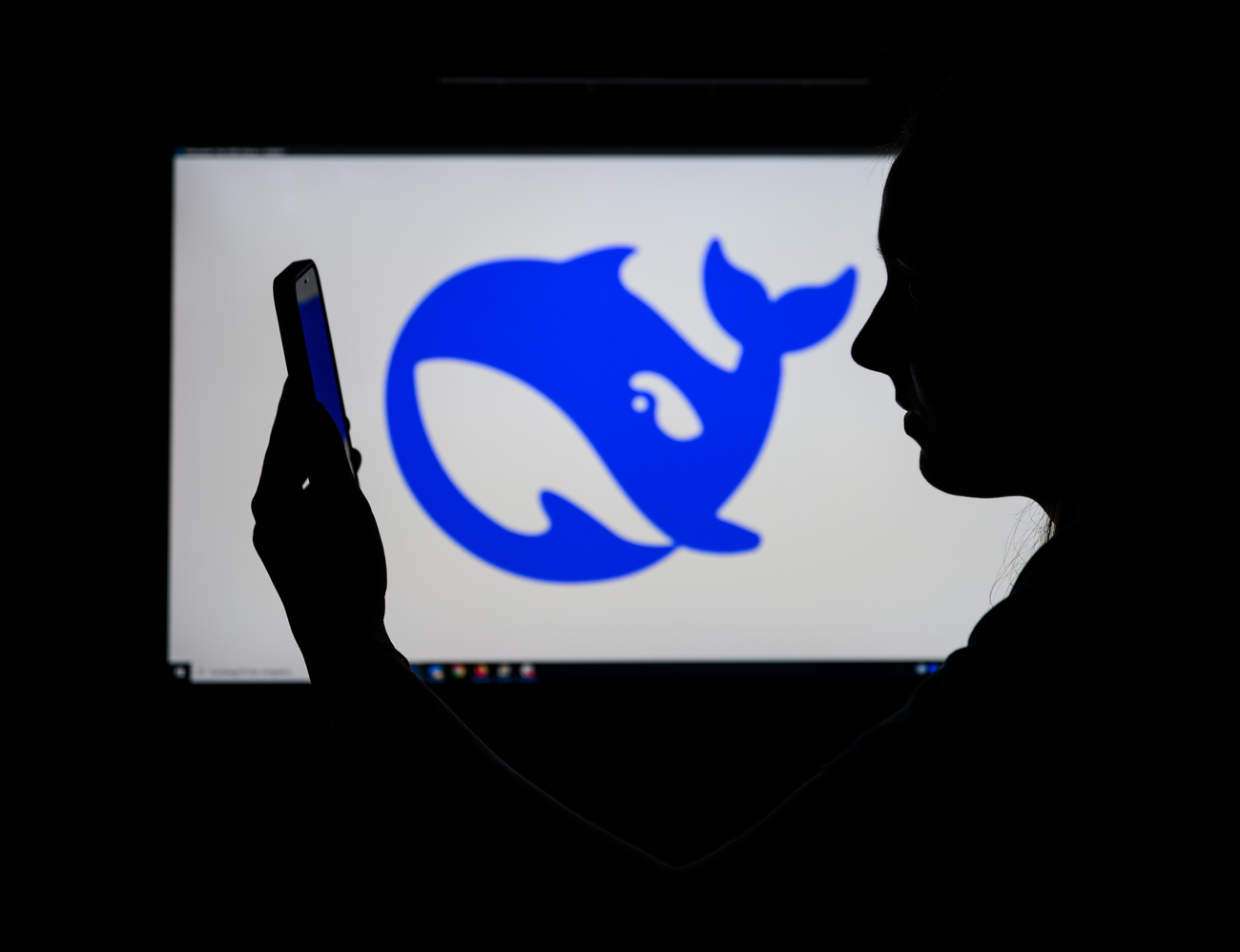



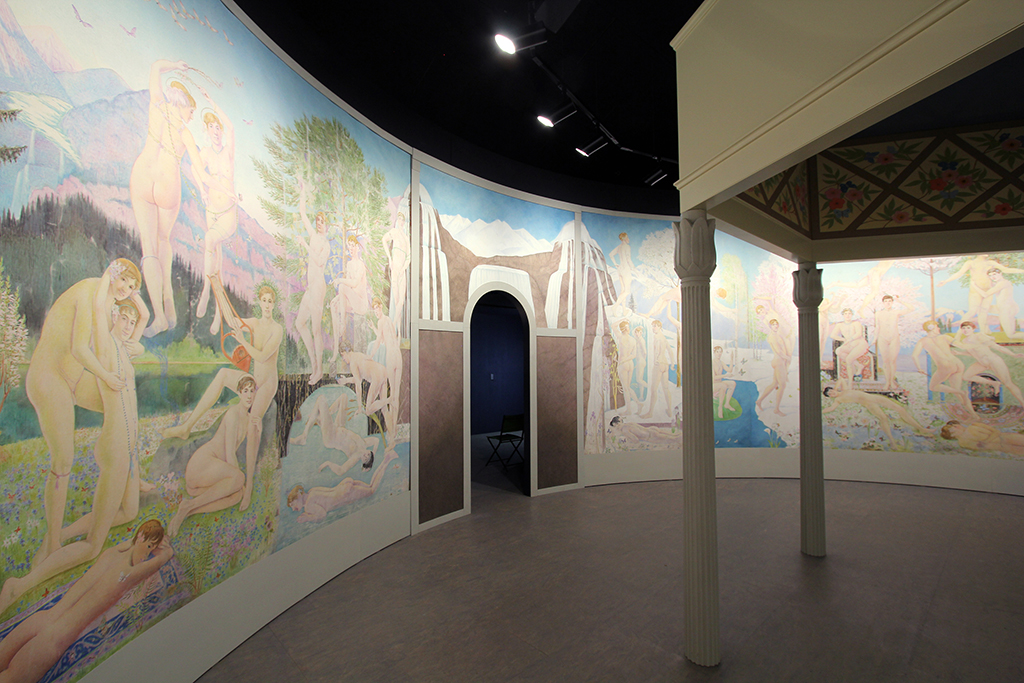



You can find an overview of ongoing debates with our journalists here . Please join us!
If you want to start a conversation about a topic raised in this article or want to report factual errors, email us at english@swissinfo.ch.